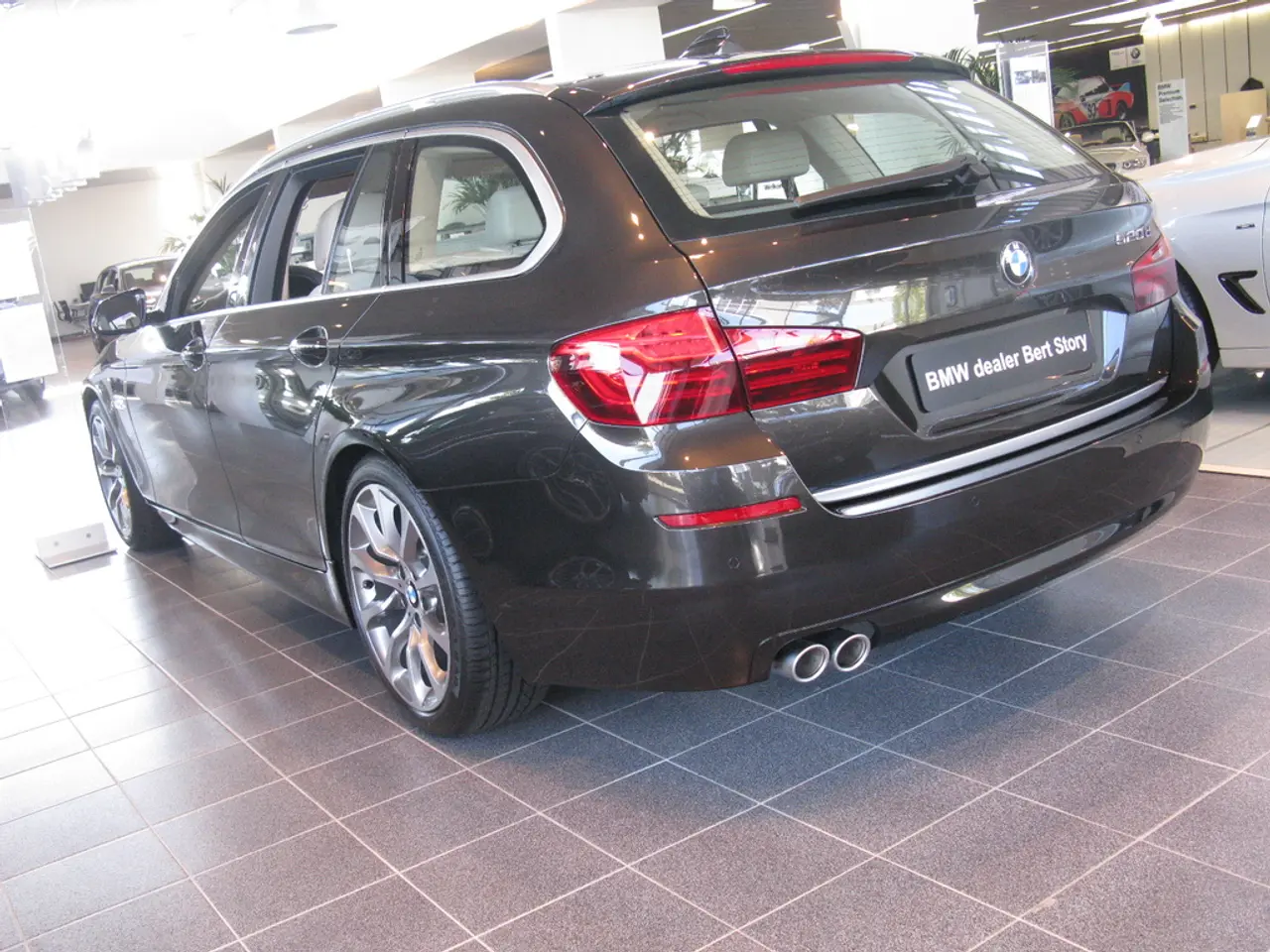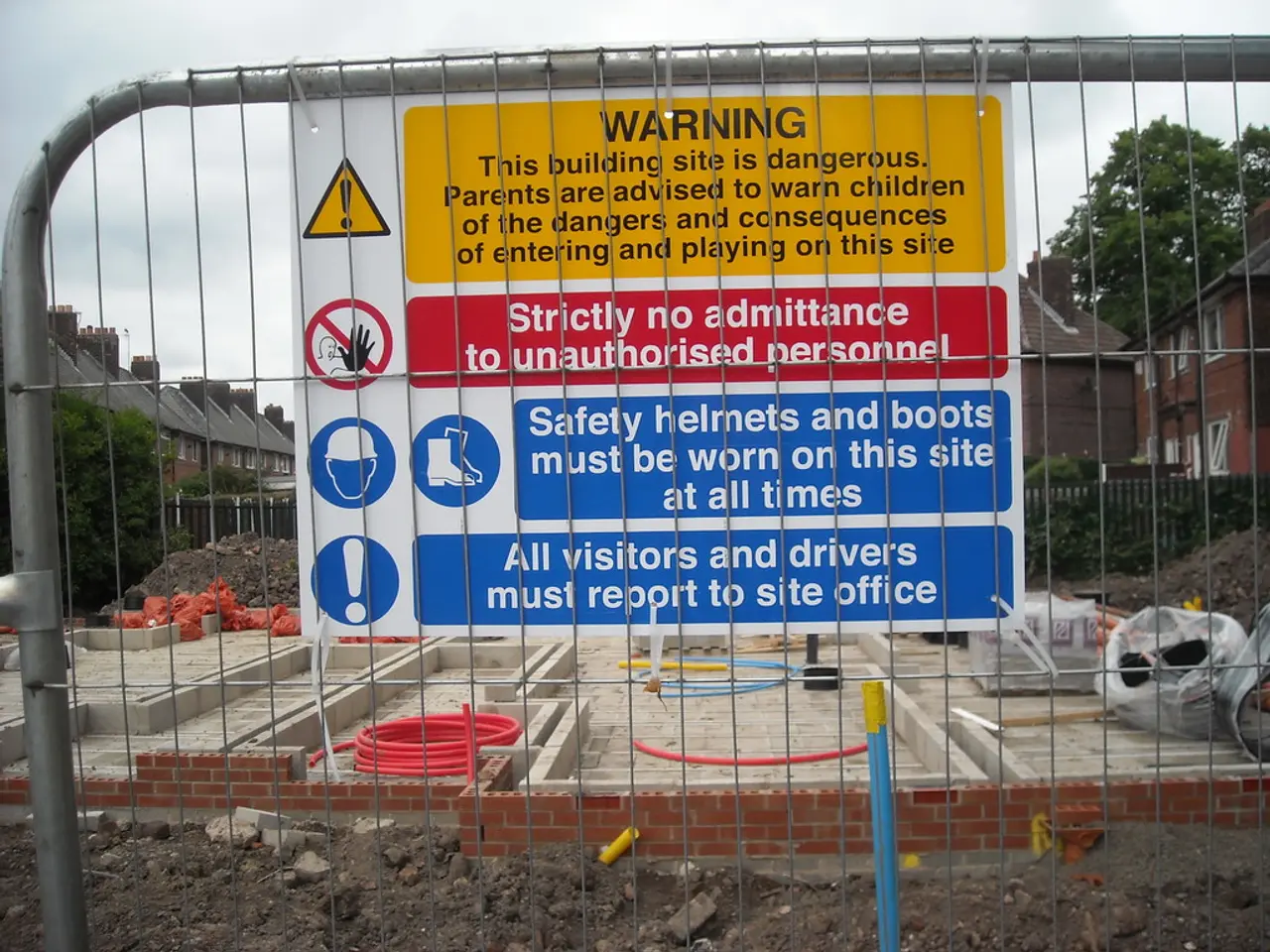Amazon's Electric Vehicle Initiative Cutting Down Emissions Per Unit Sold
Amazon Accelerates Electric Vehicle Deployment to Combat Emissions
In a significant push towards sustainability, Amazon has been making strides in reducing its carbon footprint, particularly through the deployment of electric vehicles (EVs).
The e-commerce giant's EV fleet expanded considerably in 2024, growing from 19,000 to over 31,000 vehicles. This rapid expansion is part of Amazon's ambitious plan to operate at least 100,000 electric delivery vans by 2030 [1][2][3].
Amazon's strategy for fleet electrification is multifaceted. The company is collaborating closely with Rivian, a producer of custom electric delivery vans, to design vehicles tailored to Amazon's logistics needs. By late 2024, over 20,000 Rivian electric delivery vans (EDVs) were in operation in over 100 cities across the US and Europe [2][4].
Innovation plays a crucial role in Amazon's EV strategy. The company is introducing about 1,000 EDVs equipped with Vision-Assisted Package Retrieval (VAPR) technology, which improves driver efficiency and reduces delivery time, thereby lowering emissions [4].
Amazon is also investing in charging infrastructure, with a private network of over 17,000 chargers at its facilities enabling large-scale EV operation [4].
The electric vans are making a significant impact, cutting greenhouse gas emissions by over 50% compared to traditional diesel vans, contributing to Amazon’s goal of net-zero carbon by 2040 [1][4].
However, despite these initiatives, Amazon's overall emissions rose in 2024 due to expanded logistics operations and increased data center activity. Yet, the carbon intensity per dollar of sales improved, indicating progress in emission efficiency [1][3].
Amazon's regional operations are also demonstrating success. The company surpassed its 2025 target for installing 10,000 EVs in India ahead of schedule [1].
Beyond EVs, Amazon is making strides in other areas of sustainability. The company aims to reduce food waste by 50% by 2030, and is using renewable energy sources to meet 100% of its global electricity usage [1][3].
Amazon Web Services (AWS) data centers have a power consumption effectiveness (PUE) of 1.15, which is higher than the industry average of 1.25, indicating efficiency in energy use [1].
In summary, Amazon's EV deployment strategy combines aggressive fleet electrification, tech innovation, infrastructure investment, and regional targets to reduce emissions, forming a core pillar of their broader sustainability and net-zero carbon goals [1][2][4].
[1] Amazon Sustainability Report 2024 [2] Amazon Press Release: Amazon Announces Deployment of Over 20,000 Rivian Electric Delivery Vans [3] Amazon Press Release: Amazon Reports 2024 Sustainability Progress [4] Amazon Press Release: Amazon Introduces Vision-Assisted Package Retrieval Technology for Electric Delivery Vans
- Amazon's strategic approach to environmental sustainability extends beyond electric vehicles, as they aim to cut food waste by 50% by 2030.
- In the realm of ESG investing, Amazon's commitment to sustainability is evident in their aim to meet 100% of global electricity usage with renewable energy sources.
- The company's success in India demonstrates a green approach, as they surpassed their 2025 target for installing 10,000 EVs ahead of schedule.
- Amazon Web Services (AWS) data centers, a significant component of their operations, exhibit efficiency in energy use, with a power consumption effectiveness (PUE) of 1.15.
- With over 31,000 electric vehicles in operation by late 2024, Amazon is making significant strides towards their goal of operating 100,000 electric delivery vans by 2030.
- Collaborating with Rivian, a producer of custom electric delivery vans, Amazon is designing vehicles specifically tailored to their logistics needs.
- Technology innovation is integral to Amazon's green strategy, as they introduce electric delivery vans equipped with Vision-Assisted Package Retrieval (VAPR) technology to improve driver efficiency.
- Apart from EVs, Amazon is working with NGOs and finance institutions to promote the adoption of renewable energy and sustainable lifestyle choices across various industries.
- By focusing on sustainability in science, technology, and lifestyle, Amazon is contributing to the global effort to combat climate-change, and promoting the use of electric vehicles in cars and other sectors of the industry.




